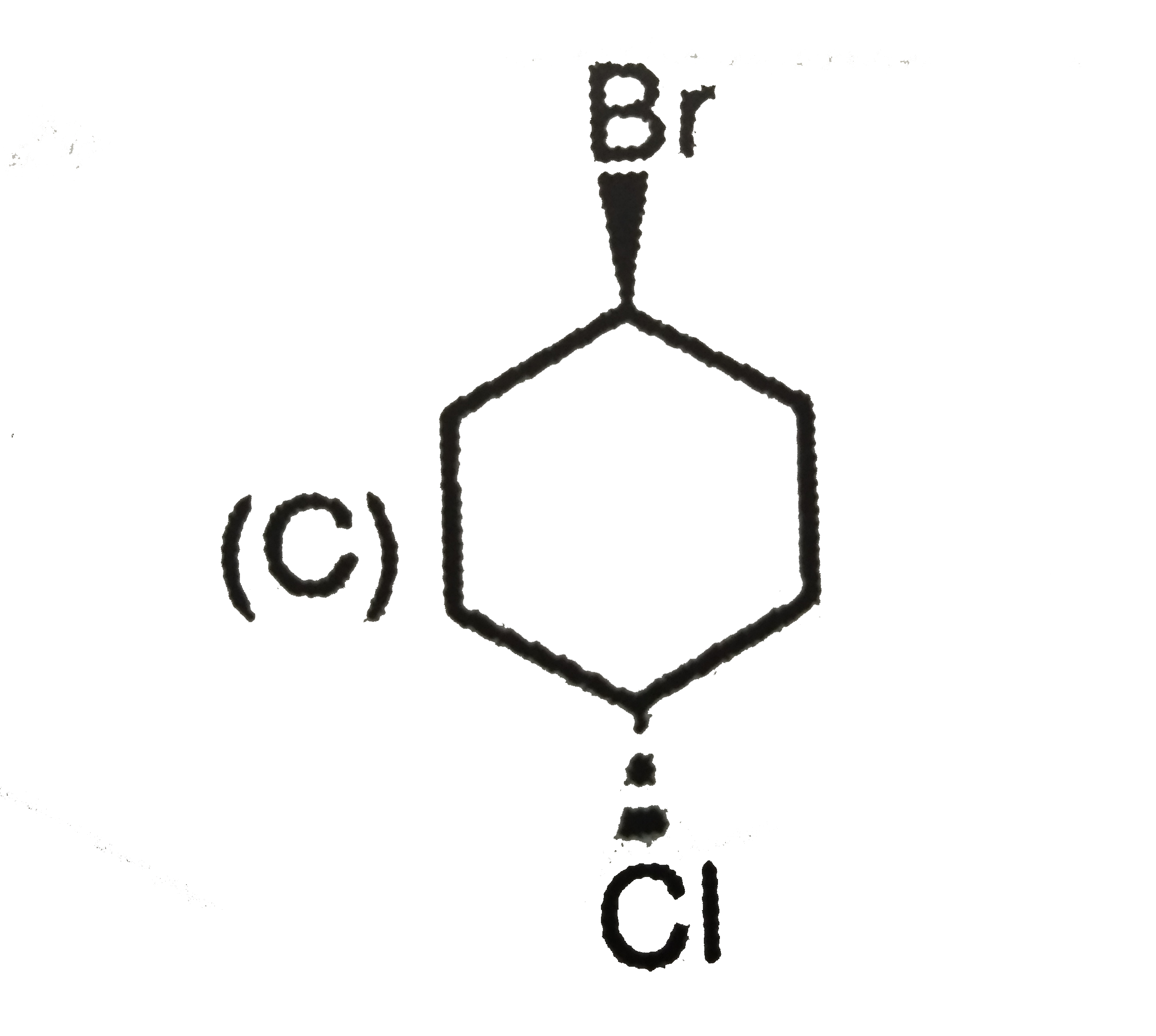Which of the following molecules contain a chiral centre?
2-chloropropan-2-ol
1-chlorobutane
2-chloropropane
2-chlorobutane
The correct Answer is:D
To determine which of the given molecules contain a chiral center, we need to analyze each molecule's structure and identify if there is a carbon atom bonded to four different groups. A chiral center is typically a carbon atom that has four different substituents attached to it.
1. Identify the Molecules: We will analyze the following molecules:
- 2-chloro-propane-2-ol
- 1-chloro-butane
- 2-chloro-propane
- 2-chloro-butane
2. Analyze 2-chloro-propane-2-ol:
- Structure: The carbon at position 2 is attached to:
- OH group
- Two methyl groups (CH₃)
- One hydrogen atom (H)
- Since two of the substituents are identical (the two methyl groups), this carbon does not have four different groups. Therefore, 2-chloro-propane-2-ol does not have a chiral center.
3. Analyze 1-chloro-butane:
- Structure: The carbon at position 1 is attached to:
- Chlorine (Cl)
- Three hydrogen atoms (H)
- Since three of the substituents are identical (the three hydrogens), this carbon does not have four different groups. Therefore, 1-chloro-butane does not have a chiral center.
4. Analyze 2-chloro-propane:
- Structure: The carbon at position 2 is attached to:
- Chlorine (Cl)
- Two methyl groups (CH₃)
- One hydrogen atom (H)
- Again, since two of the substituents are identical (the two methyl groups), this carbon does not have four different groups. Therefore, 2-chloro-propane does not have a chiral center.
5. Analyze 2-chloro-butane:
- Structure: The carbon at position 2 is attached to:
- Chlorine (Cl)
- Methyl group (CH₃)
- Hydrogen atom (H)
- Ethyl group (C₂H₅)
- All four substituents are different (Cl, CH₃, H, and C₂H₅). Therefore, 2-chloro-butane has a chiral center.
Conclusion:
The molecule that contains a chiral center is 2-chloro-butane.
- 2-chloro-propane-2-ol
- 1-chloro-butane
- 2-chloro-propane
- 2-chloro-butane
- Structure: The carbon at position 2 is attached to:
- OH group
- Two methyl groups (CH₃)
- One hydrogen atom (H)
- Since two of the substituents are identical (the two methyl groups), this carbon does not have four different groups. Therefore, 2-chloro-propane-2-ol does not have a chiral center.
- Structure: The carbon at position 1 is attached to:
- Chlorine (Cl)
- Three hydrogen atoms (H)
- Since three of the substituents are identical (the three hydrogens), this carbon does not have four different groups. Therefore, 1-chloro-butane does not have a chiral center.
- Structure: The carbon at position 2 is attached to:
- Chlorine (Cl)
- Two methyl groups (CH₃)
- One hydrogen atom (H)
- Again, since two of the substituents are identical (the two methyl groups), this carbon does not have four different groups. Therefore, 2-chloro-propane does not have a chiral center.
- Structure: The carbon at position 2 is attached to:
- Chlorine (Cl)
- Methyl group (CH₃)
- Hydrogen atom (H)
- Ethyl group (C₂H₅)
- All four substituents are different (Cl, CH₃, H, and C₂H₅). Therefore, 2-chloro-butane has a chiral center.
The molecule that contains a chiral center is 2-chloro-butane.
Topper's Solved these Questions
Similar Questions
Knowledge Check
Which of the following molecules has a pro-chiral centre?
ACH3CH2COOHBHOOCCH2COOHC(CH3)2CHCOOHDCH3CHOHCOOHWhich of the following molecules is (are) chiral ?
 AI and IIBIII and IVCII, IV and VIDI, II, III and VI
AI and IIBIII and IVCII, IV and VIDI, II, III and VIWhich of the following molecule is chiral.
A B
B C
C D
D
Molecules whose mirror image is non superimposable over them are known as chiral. Which of the following molecules is chiral in nature ?
View SolutionMolecules whose mirror image is non-superimposable over them are known as chiral. Which of the following molecules is chiral in nature?
View SolutionWhich of the following molecules is chiral?
View SolutionWhich of the following molecules are chiral?
View SolutionWhich of the following molecules are chiral ?

View Solution

